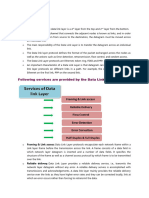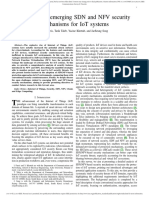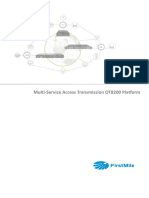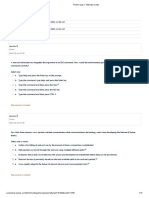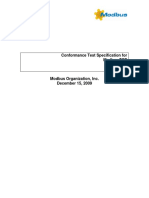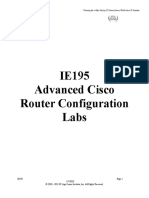0% found this document useful (0 votes)
11 views27 pagesChapter 4 - Data Link Layer
The data-link layer operates between the physical and network layers, facilitating node-to-node communication by encapsulating datagrams into frames and managing tasks such as framing, physical addressing, flow control, error detection, and access control. It employs various techniques for error detection and correction, including parity checks, checksums, and cyclic redundancy checks, while also implementing flow control mechanisms like Stop and Wait and Sliding Windows to ensure efficient data transmission. Additionally, the data link layer is divided into the Logical Link Control (LLC) and Media Access Control (MAC) sub-layers, with protocols in place to manage access to shared communication links.
Uploaded by
buomwuthot19Copyright
© © All Rights Reserved
We take content rights seriously. If you suspect this is your content, claim it here.
Available Formats
Download as PDF, TXT or read online on Scribd
0% found this document useful (0 votes)
11 views27 pagesChapter 4 - Data Link Layer
The data-link layer operates between the physical and network layers, facilitating node-to-node communication by encapsulating datagrams into frames and managing tasks such as framing, physical addressing, flow control, error detection, and access control. It employs various techniques for error detection and correction, including parity checks, checksums, and cyclic redundancy checks, while also implementing flow control mechanisms like Stop and Wait and Sliding Windows to ensure efficient data transmission. Additionally, the data link layer is divided into the Logical Link Control (LLC) and Media Access Control (MAC) sub-layers, with protocols in place to manage access to shared communication links.
Uploaded by
buomwuthot19Copyright
© © All Rights Reserved
We take content rights seriously. If you suspect this is your content, claim it here.
Available Formats
Download as PDF, TXT or read online on Scribd
/ 27
























